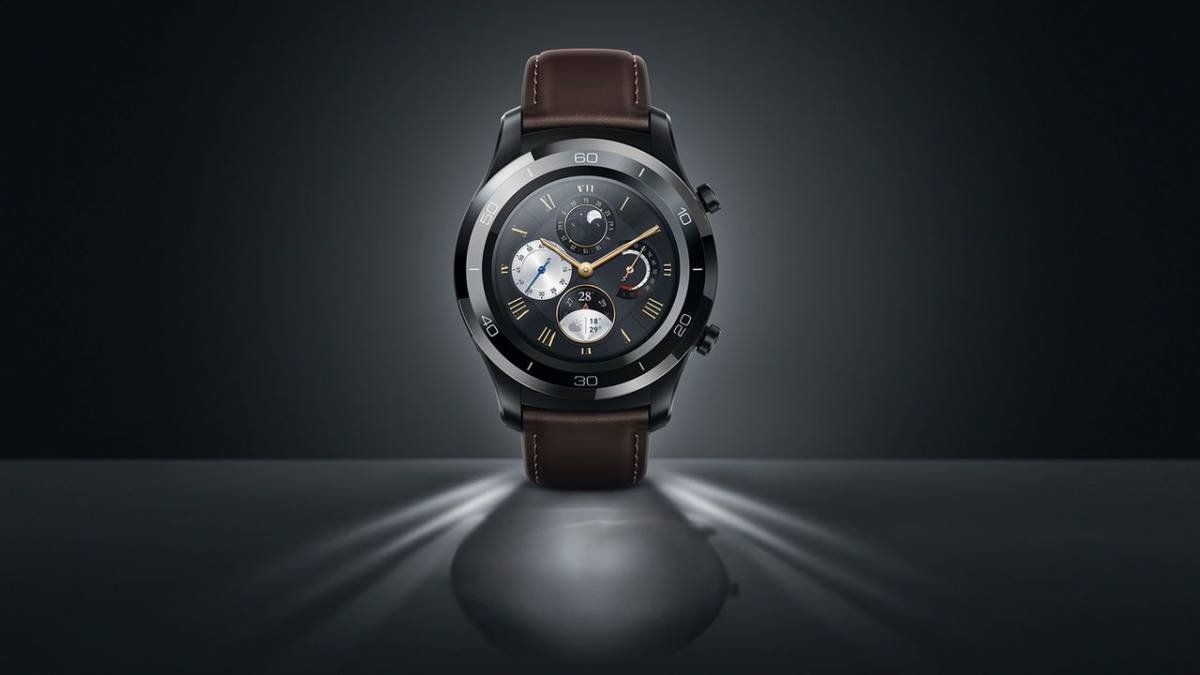Rating of the best aluminum radiators for 2025
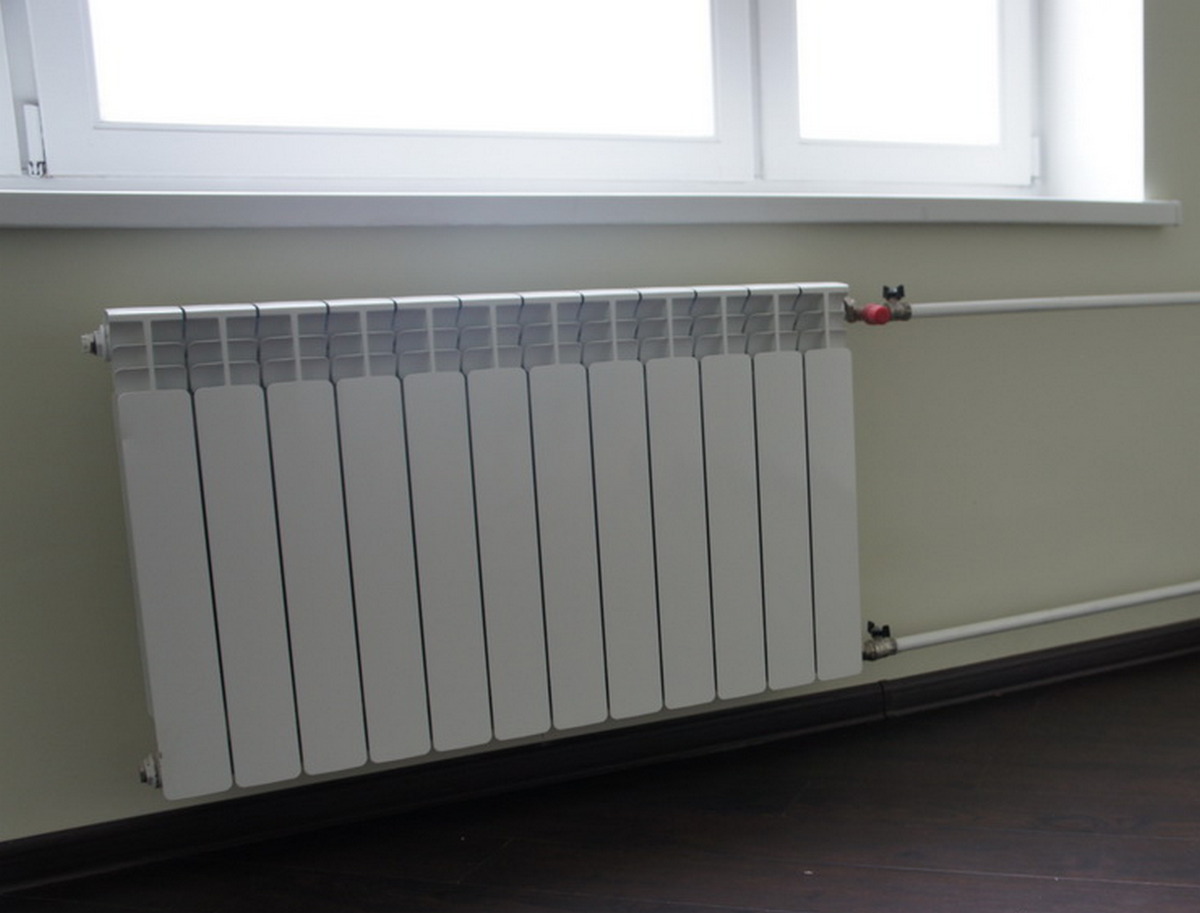
Today, heating radiators made of aluminum are considered one of the most efficient stationary heating devices. They can be used both in newly created heat transfer systems and replace obsolete cast iron models. The considered type of heat exchangers has excellent technical characteristics, but has some operational features.

Content [Hide]
General information
Sections for this device are made according to the method of pressing aluminum raw materials with the addition of a certain amount of silicon to the base mass. For each product, lower and upper collectors are provided, connected by metal ribs and a single vertical channel. Due to the rib structure, there is an increase in the heat transfer coefficient, due to the increased surface area. Separate sections are connected to each other with threaded fasteners. The principle of operation is that the heated coolant filling the battery simultaneously collects and gives off heat energy to the external space. Due to the particularly good thermal conductivity of aluminum as a metal, the entire device has a higher efficiency, which distinguishes it from cast iron and bimetallic "brothers".
It is worth noting that the more a separate module will include sections, the greater its heat transfer will be. However, if there are too many of them, then some compartments will become simple ballast, respectively, the calculation for the volume of the entire system must be made strictly in relation to the heat indicators that the room to be equipped requires.
Today, the production of improved aluminum batteries has already been launched, whose characteristics make it possible to use an arbitrary number of sections, because. they are adapted to control the coolant pressure individually.
Standard aluminum batteries have the following technical parameters:
- The total volume is from 0.35 to 5 liters;
- Heating area - from 0.4 to 0.6 square meters. meters;
- Wall thickness - from 2 to 3 millimeters;
- Depth - from 110 to 140 millimeters;
- Height - from 350 to 1000 millimeters.
Modern types of aluminum radiators
They are classified depending on the manufacturing technology, i.e. By what method they are produced - by casting or extrusion.
- Cast models.
Such samples are cast in separate sections from silumin raw materials under high pressure. Their wall thickness varies from 2 to 3 millimeters. There are no seams in the structure, and the flow nodal connections are made in the form of an oval in order to improve the flow of the coolant. These characteristics allow the device to withstand a pressure of 6-16 atmospheres, and their service life is at least 15-25 years. In turn, cast models are further divided into two subgroups:
- Reinforced - their walls have a special thickening, their collector width is also increased, and the pressure is limited to 16 bar. They are considered the best solution for integration into central heating systems.
- Standard - have medium strength characteristics and can withstand a pressure of not more than 6 bar. The best option for closed individual systems with their own heating of the coolant (private houses).
The number of segments in cast models can vary both upwards and downwards. The modules are interconnected with steel nipples.
- extrusion models.
For such models, the base body part is made by extruding the melting material through special molds. The collector for them is cast separately. All structural parts are interconnected either by flaring, or gluing, or welding. Any of these connection options do not require the presence of nipples, which helps to avoid the risk of corrosion.For extrusion samples, the collector walls are smaller in thickness than for cast "brothers". In principle, this circumstance has a positive effect on the total mass of the device, but it reduces the power and the pressure rating. In these models, the number of segments is always the same. The presence of connecting seams can sometimes threaten with leaks, but this can be avoided without exceeding the operational capabilities of the radiator. The height of the battery can be up to 2 meters, and this allows the use of narrow samples with a minimum of sections. The cost of extruded products is cheaper than that of cast products.
- anodized models.
Structurally and in shape, they differ little from cast models, only they are made from an improved alloy, and at the final stage they are bombarded with electrolytes. In this way, high strength is achieved for the aluminum oxide layer. A special coupling of an external installation acts as a connecting component for such devices. Inside, such batteries have less roughness, which ensures a more uniform flow of the coolant, and corrosion risks are minimized. The power of one anodized segment can reach 220 watts. Installation of these models is possible both in central and in individual heating systems.
Advantages and disadvantages of aluminum radiators
Their undoubted advantages can be easily attributed:
- Light weight - one section weighs no more than one and a half kilograms. From this it is clear that even a long battery of ten segments will weigh only 15 kilograms, which greatly facilitates the processes of transportation and installation.
- The maximum heating of the coolant - such a value for a heat-carrying liquid can easily reach 130 degrees Celsius, and this exceeds the boiling point of H2O.This parameter is considered positive for individual heating systems.
- Cost - the production cycle of aluminum radiators is much cheaper than that of bimetallic ones. The latter are not very malleable in the processing of pure raw materials, which affects their high final cost.
- Increased efficiency - aluminum, as a special metal, has excellent thermal conductivity and each segment of such batteries can produce about 150-200 W of heat. To obtain a similar indicator from bimetallic devices, it will be necessary to work at least two or three segments (which again increases the price of the latter).
- A variety of dimensions and shapes - due to the ease of manufacture, aluminum radiators are produced in a variety of sizes, with different depths, widths, center distances, which ensures the breadth of consumer choice.
- Aesthetic appearance - they fit very neatly into any room interior and become almost invisible. Often they do not even need decorative protective shielding.
The main "cons" of aluminum batteries include:
- The risk of corrosion - for the products in question, rust most often forms at the junction with the pipeline of the heating main. This negative situation can be avoided by covering the problem area with special anti-corrosion compounds.
- Short service life of connecting elements - this problem applies only to prefabricated models in which it is possible to attach / detach individual sections. Frequent such assembly / disassembly operations will clearly reduce the overall life of the entire product.
- Alkaline sensitivity - for aluminum, high levels of alkali in the coolant are critical.If the indicator exceeds 7 units, then the evolution of hydrogen will begin, which will increase the internal pressure and the battery case will simply burst. Accordingly, it is necessary to run a coolant with a normal alkaline pH level through aluminum batteries.
- Susceptibility to destruction due to water hammer - such a negative manifestation usually occurs in centralized heating lines. The most dangerous periods are the start of the heating season in late autumn or a simple preventive purge. Here it remains only to rely on a sufficient thickness of the radiator walls.
Standard equipment for installation of aluminum radiators
Traditionally, a fairly complete set will include:
- Ball valves;
- Sealing gaskets;
- Racks and brackets;
- Valve for bleeding air from the heating main;
- Plugs for left and right sides.
IMPORTANT! The connection of aluminum batteries must be carried out only by specialists, because this type of activity must be certified (the master must have an appropriate certificate of the ability to perform such work).
Connection Features
When connecting the type of heating devices in question, it is necessary to determine the technical parameters of your heat-carrying line:
- Pressure for the pressure test period;
- Maximum heating of the coolant;
- Average operating pressure within the entire system.
The classic option for the location of heating batteries is considered to be a light opening located under the windowsill or on a wall rack. Of these places, it is most convenient to connect the radiator to the line on both sides. If it is planned to integrate an aluminum radiator into a one-way main, then in this case you should not use models with a large number of segments.
If the line provides for forced circulation for models with 24 or more sections, then such a battery should be connected on both sides. If the line is based on natural circulation, then the number of segments in one module should not exceed 12 pieces.
When performing thermal calculations, it must be taken into account that the power of individual products may differ from that declared by the manufacturer in the accompanying documentation. Accordingly, the best solution would be to make calculations based on the type of connection. Thus, depending on the option of supplying the heat-carrying fluid, the percentage of heat transfer (i.e., losses) may vary:
- For a single-pipe option - 19-20%;
- For the lower option - 12-13%;
- For the cross option - 2%.
Battery installation should be based on the following recommended parameters:
- Indent from the radiator to the floor - at least 60 millimeters;
- The distance from the top to the window sill is 100 millimeters;
- The gap between the battery and the wall is from 30 to 60 millimeters.
Locking and regulating elements are mounted on the input / output nodes of the product. Due to this control mechanism, it will be possible to regulate the ambient temperature in the room, which can be carried out both manually and automatically (for the latter, special heads, regulators and thermostatic valves are used). Mounted taps will allow you to easily disconnect devices from the main heating system, for example, for repair, replacement or, if necessary, flushing of individual modules. Also, shut-off valves will be useful in case of emergencies associated, for example, with the destruction of the hull, i.e. when an immediate shutdown of the coolant supply is required.
Proper Care of Aluminum Batteries
In terms of care, these devices are unpretentious. The design of the considered type of batteries does not imply the accumulation of dust inside the case, because this is prevented by convection currents. In addition, if you install the product in accordance with all the rules, and in addition cover the problem areas of the joints with a protective compound, then corrosion can also be avoided.
Nevertheless, during operation it is necessary to adhere to some easy points:
- Do not allow devices to come into contact with copper, as such interaction on an ongoing basis will necessarily lead to corrosion and the destruction of the hull will occur much faster. The same will happen if the coolant used is undistilled water, which can easily provoke the formation of “electrical rust”. From this it is clear that water with elevated pH values should not act as a heat-carrying liquid. Among other things, such contact can occur if the aluminum module is connected to a copper riser or the boiler heat exchanger is made on the basis of copper pipes. A similar situation is typical for open heating structures using metal lines. Accordingly, the use of plastic pipelines will be the best solution. But in closed systems that use not water, but a special coolant, such a risky contact cannot occur at all;
- Proper placement of modules - this will increase the service life and not expect them to be repaired soon. For example, proper installation should not block access to regulators that will need to be activated in emergency situations;
- Maintaining a working pressure of 5-7 atmospheres is the standard value for aluminum radiators. Also, it is required to take care of the quality of the coolant, especially the content of alkaline impurities in it. It is necessary to avoid the use of such liquids to maintain the strength qualities of the inner surface of the products;
- Careful attitude - it is worth remembering that aluminum is a soft material, as a result of which it is extremely susceptible to third-party deformations. Such batteries should not be subjected to excessive force, much less subjected to mechanical shock.
Rating of the best aluminum radiators for 2025
Budget segment
3rd place: "SMART Install Easy One 500, 4 sections"
votes 0
This device has the highest heat output and fast ability to heat rooms of different sizes. An ideal option for economical owners of houses with individual closed heating systems. The durability of this device is a consequence of high quality control at each stage of manufacture, the use of an innovative anti-corrosion coating with a layer of fluorozirconium and an oxide film. The exterior surfaces have gone through a two-stage painting process. The model has a modern appearance and flawlessly white high-quality paintwork. The recommended cost for retail chains is 2000 rubles.
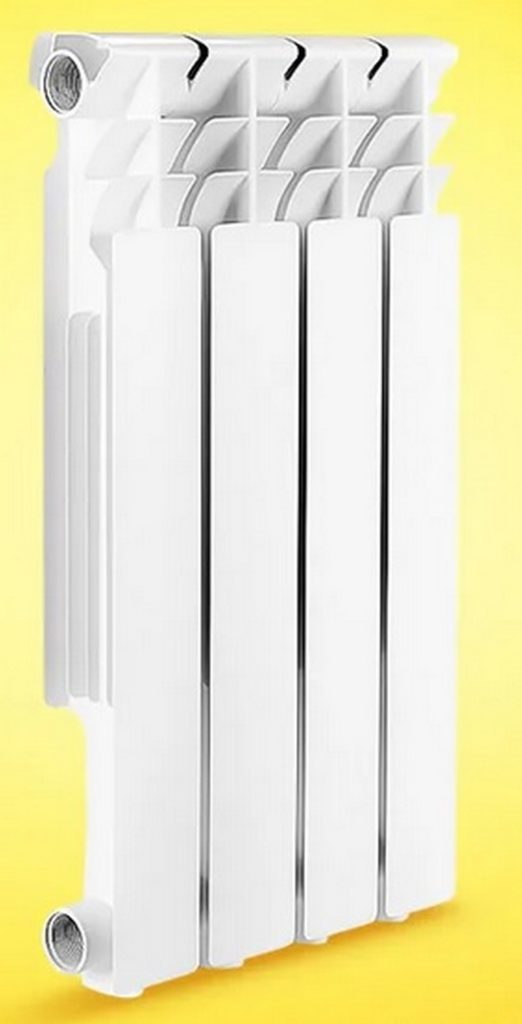
- 2-stage painting;
- Crimping pressure - 24 bar;
- The burst pressure is over 40 bar.
- Not detected.
2nd place: "ROMMER Optima 500, 4 sections"
votes 0
The product is the optimal solution for private heating systems. The model is made by injection molding, which guarantees reliability and long service life.Thanks to its presentable appearance, the device will harmoniously fit into any interior style. It is distinguished by the highest heat transfer rate, which, with the same flow of hot water, increases the specific power of heat release, and the room will warm up faster. Also, the design is slightly susceptible to corrosion. The recommended cost for retail chains is 2100 rubles.
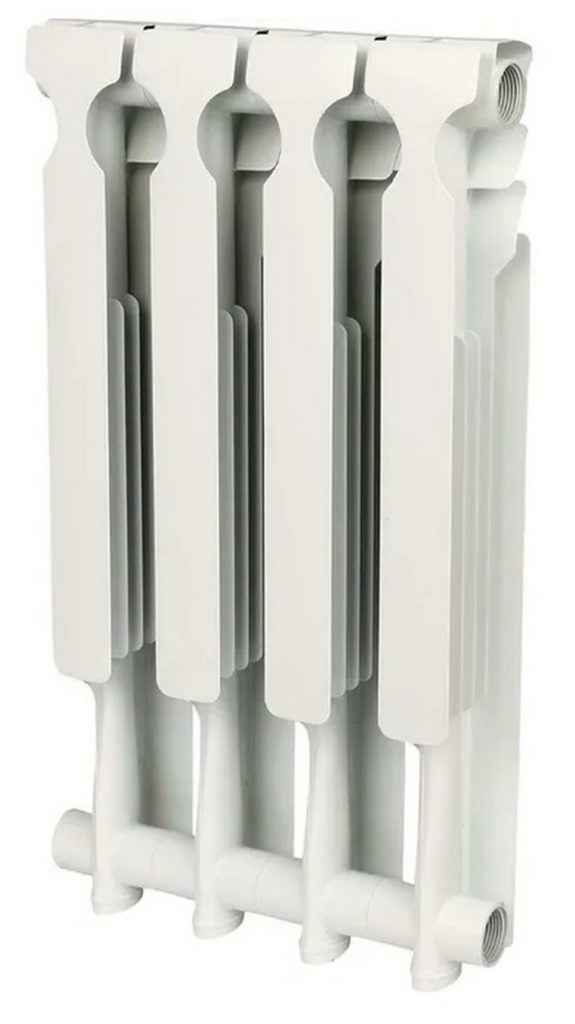
- Wall thickness of the vertical collector - 1.8 mm;
- Treatment with anti-corrosion coating;
- 3-stage process of grinding surfaces using ROMMER technology.
- Insufficient equipment (no plugs).
1st place: "Monlan 500/80, 6 sections"
votes 0
The sample is intended for heating residential premises. The device is equipped with 6 heating sections made using modern injection molding technology. This manufacturing method improves its technical characteristics, increases work efficiency. Heating occurs due to the uniform distribution of the heat emitted and good convection. The calculation of the power of the heating device is carried out in accordance with the area of \u200b\u200bthe heated room. The recommended cost for retail chains is 3100 rubles.
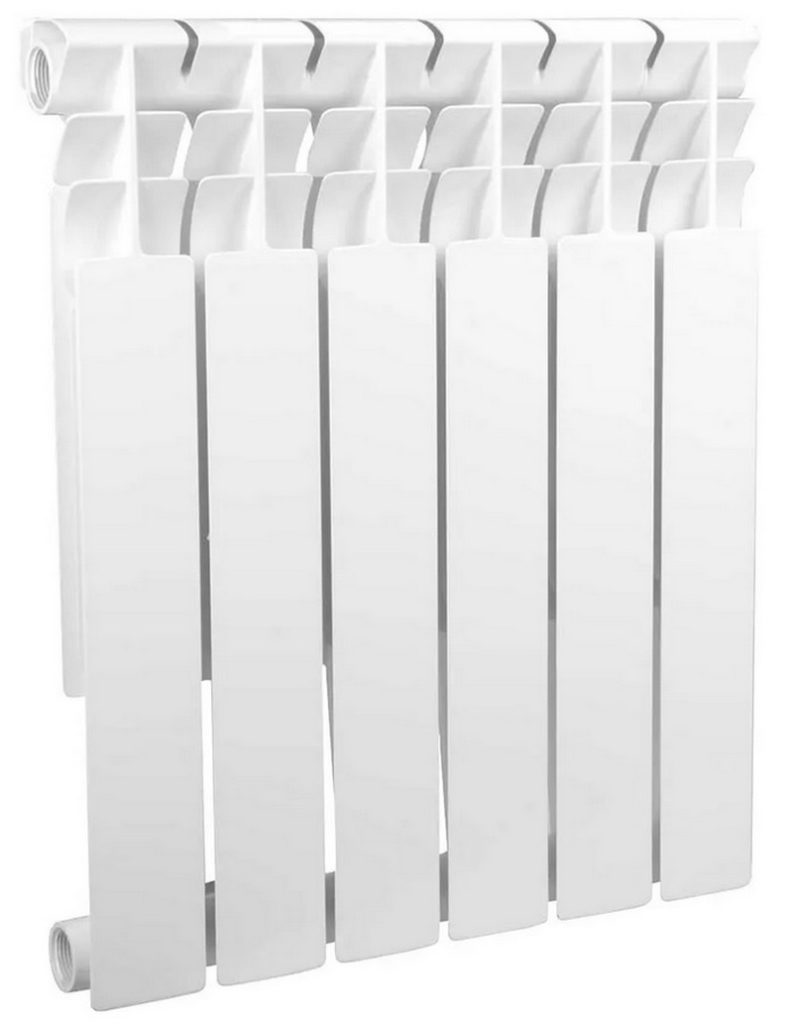
- Modern design;
- Easy care;
- Light weight;
- Safety in operation.
- Not detected.
Middle price segment
3rd place: "Valfex CO-BQ500A, 10 sections"
votes 0
These high-strength aluminum devices can be used both for autonomous heating systems and for central heating systems of low-rise buildings. The high heat transfer of the sections makes it possible to use radiators in heating systems with a low-temperature operation system.Low inertia provides effective thermal control with a guarantee of maximum comfort. Non-freezing liquids can be used as a heat carrier, the pH of which is in the range of 7-8 units. For production, a special aluminum alloy with a low zinc content is used. All products are double-painted: the first layer is applied by electrophoresis, providing anti-corrosion protection for both the outer and inner surfaces of the device. The second layer is applied in an electrostatic system by coating the prepared surface of the radiator with epoxy powder paint. Such a coating significantly increases reliability and reduces the likelihood of channel overgrowth. The recommended cost for retail chains is 5450 rubles.

- GOST certification;
- The maximum temperature of the passing fluid is 110 degrees Celsius;
- Working pressure - 24 atmospheres.
- Not detected.
2nd place: "Termica Torrid 500/80 - 12 sections"
votes 0
The sample is designed for use in multi-apartment and private construction. In production, a special alloy with the addition of silicon is used. On the surface, under the influence of direct electric current, a paintwork material is applied. The product consists of separate elements connected to each other by means of nipples, which is a collapsible design. The collapsible design allows you to reduce or increase the segments. Tightness at the joints of the segments is provided by sealing gaskets. The product is certified on the territory of the Russian Federation. At an operating temperature of 80-90 degrees, the battery can withstand pressure up to 18 bar.The recommended cost for retail chains is 6490 rubles.

- The maximum operating temperature of the radiator is 110 degrees;
- Center distance - 500 mm;
- High quality shockproof case.
- Not detected.
1st place: "ALBUZ 500/80 10 sections Ferat"
votes 0
The device is intended for use in heating systems of residential, public and industrial buildings, individual houses, cottages, garden houses, garages, etc. It is designed in accordance with European standards specifically for use in Russia and is fully adapted to Russian operating conditions. The warranty period of operation (subject to the requirements for storage, transportation, installation and use) is 10 years. The recommended cost for retail chains is 6755 rubles.
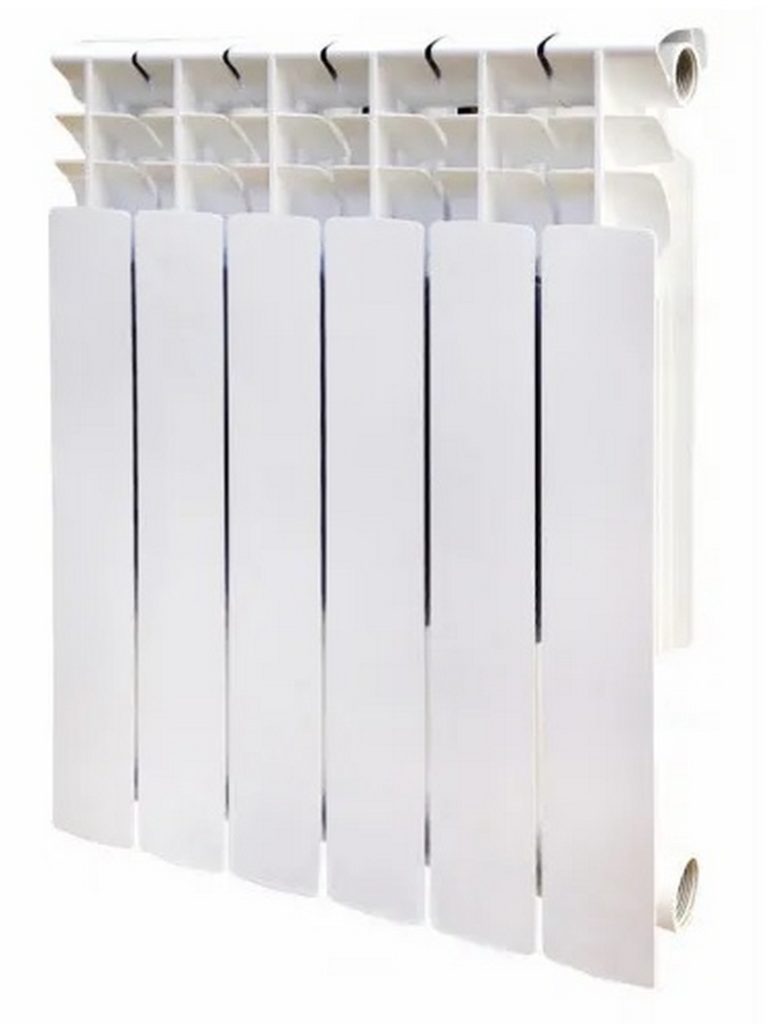
- The type of coolant used is antifreeze;
- Wall mount;
- Adequate price.
- Not detected.
Premium class
3rd place: "ANIT-PIONER-WHITE-1000×500 14 sections"
votes 0
The product has an energy efficiency class of "A++". In order to increase heat transfer, Microfin technology is used, due to which the surface area of \u200b\u200beach sector in the radiator has increased. The larger the surface area, the higher the heat output. The radiator withstands excess pressure up to 120 bar when the normal operating pressure in the heating system is increased to 14 bar. The products are manufactured and tested in accordance with the BSEN 446 standard. The recommended retail price is 24,300 rubles.

- High efficiency;
- Innovative technology "Microfin";
- Ability to withstand high pressure.
- Overcharge.
2nd place: "Valtec TNRD.51/14, 14 sections"
votes 0
This is a modern heating device that can be installed both in a small country house with its own boiler, and a high-rise building connected to heating networks. A design feature is a slight inclination of the inner side ribs with respect to the vertical axis of the section. This allows you to increase the speed of the air flow washing the surface of the radiator, and, accordingly, heat transfer. The strength of the heating device has also been increased. This design is unique and patented. The product can be used in low temperature heating systems. Working pressure is 16 bar, test pressure is 24 bar. The maximum heat carrier temperature is 120 °C. The center distance of the model connecting pipes is 500, the section depth is 96 mm. The products are made of high-quality aluminum alloy by injection molding, have European and Russian certificates, a 50-year estimated service life and a 10-year manufacturer's warranty. They are reliable, efficient and elegant heaters with the best value for money. The recommended cost for retail chains is 26,500 rubles.
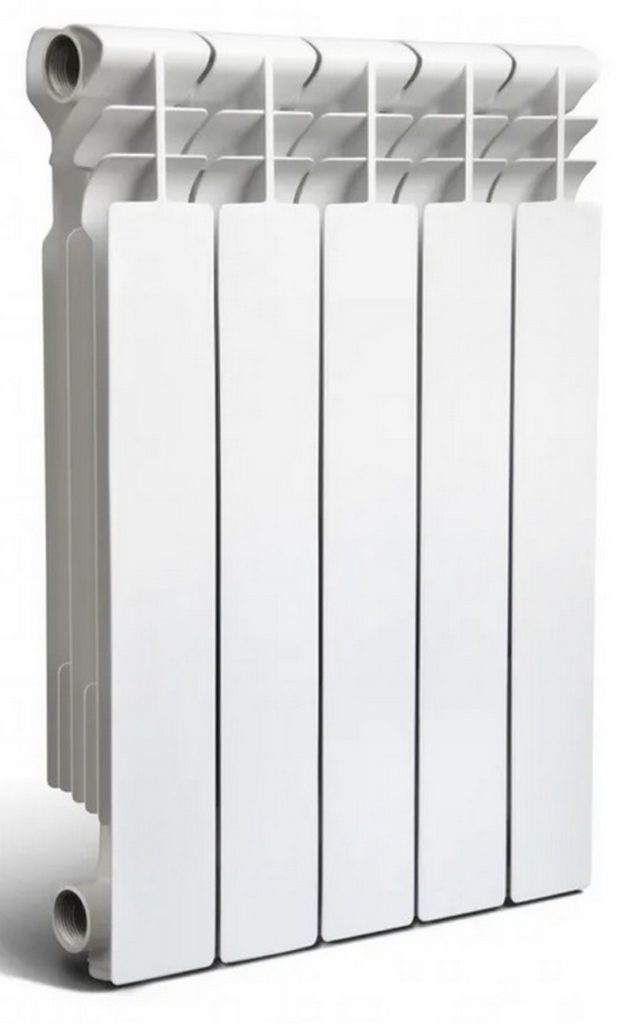
- High service life;
- Increased strength;
- Design innovation.
- Overcharge.
1st place: "ROINTE D SERIES DEW0550RAD, 10 sections"
votes 0
This model stands out from all others on the market thanks to its new curved design with front diffuser blades that allow natural air circulation to reach the desired temperature in record time. Works only on thermal oil.Fuzzy Logic Energy Control technology - allows you to optimize the energy consumption of the radiator, allowing you to achieve a consumption factor of 62% of the rated power. The heatsink is designed with aluminum side covers in line with the visual aesthetics of all sections, giving a visual feeling of a sleek device. The recommended cost for retail chains is 36,700 rubles.

- There is an anti-icing mode;
- High purity aluminum body;
- The presence of scattering knives.
- Work only with a certain type of energy carrier.
Conclusion
Like any other device, aluminum radiators have their pros and cons. They differ from their counterparts in high heat dissipation, low weight and attractive appearance. However, their Achilles heel is corrosion and softness of the material. You should carefully approach the choice of manufacturer and device so that it lasts long enough.
new entries
Categories
Useful
Popular Articles
-

Top ranking of the best and cheapest scooters up to 50cc in 2025
Views: 131653 -

Rating of the best soundproofing materials for an apartment in 2025
Views: 127693 -

Rating of cheap analogues of expensive medicines for flu and colds for 2025
Views: 124520 -

The best men's sneakers in 2025
Views: 124035 -

The Best Complex Vitamins in 2025
Views: 121941 -

Top ranking of the best smartwatches 2025 - price-quality ratio
Views: 114981 -

The best paint for gray hair - top rating 2025
Views: 113397 -

Ranking of the best wood paints for interior work in 2025
Views: 110320 -

Rating of the best spinning reels in 2025
Views: 105331 -

Ranking of the best sex dolls for men for 2025
Views: 104369 -

Ranking of the best action cameras from China in 2025
Views: 102217 -

The most effective calcium preparations for adults and children in 2025
Views: 102012

